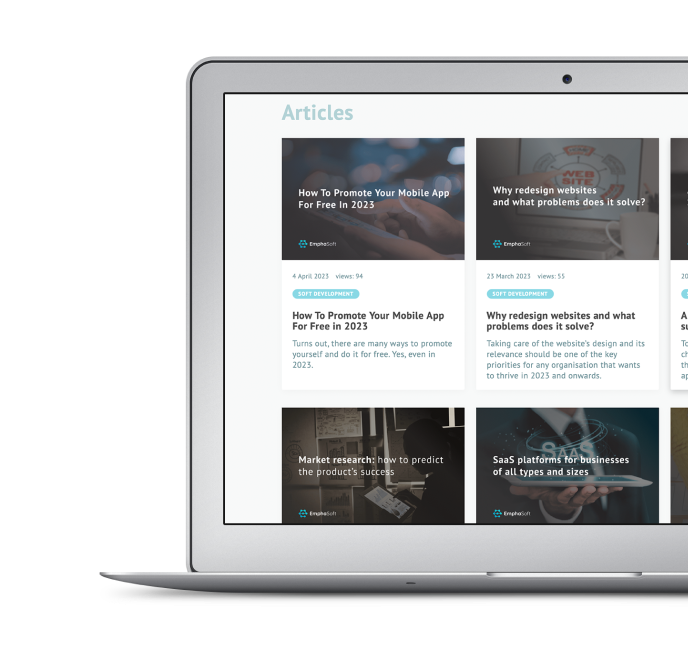The internet has become an inseparable part of our lives. We can work, study, order food, purchase houses, and party with friends – all while sitting in front of our computers. According to Statista, nearly two-thirds of the world’s population go online every day.
For businesses, this means that their online presence is just as important as the product they create. And the website becomes a primary agent between the company and the end user. That’s why taking care of the website’s design and its relevance should be one of the key priorities for any organisation that wants to thrive in 2023 and onwards.
How to know that it’s time to redesign your website
It’s not always clear whether the redesign is necessary. Yet, there are signs, if you spot them, that are clear signals something isn’t working and the status quo needs to change.
Negative feedback from users.
This one is self-explanatory. If people keep complaining about your website design and the inconveniences it creates for them, it’s time to do something about it.
Falling or generally low conversion rate.
The website’s primary purpose is to introduce users to your products and services, help them fall in love with them, and make a purchase. If you fail to meet sales targets, one of the reasons could be the website’s design that simply doesn’t speak to your audience.
Outdated design.
This is a very subjective thing, especially with how often and fast design trends are changing these days. However, there are certain industry standards that have to be respected. So if you see that all your competitors follow a certain UI pattern, it makes sense to incorporate it into your website because users are used to it and expect to see it everywhere.
Platform migration or rebranding.
Any big change to the company that involves the website can potentially be a reason for a redesign project. New platforms can have different technical requirements that your old website doesn’t meet. Rebranding logos, changing corporate colours, and anything else like that would naturally require you to do some work with the website. And it’s the perfect time to evaluate your current state, remove what’s not working, and introduce new, cool features.
Your website isn’t mobile-optimised.
About 60% of the world’s population goes online via mobile phones. If clients open your website on their smartphone and it doesn’t perform well, you risk losing these clients forever.
Besides that, redesigning the website is a good strategy if you want to generate more leads, increase traffic, or introduce new functionality.
A quick step-by-step guide to redesigning the website
If you’ve made the decision to redesign the website, you can do that completely or partially. Whichever route you go with, here are the key steps to take:
Start with internal data.
Download reports and statistics, and identify what parts and pages of your website are most loved by the users and where they drop off. Knowing where you stand will help you make better decisions.
See what everyone else is doing.
Copying someone else is not the answer, but we must stay on top of the latest industry standards and trends. Then we can choose to ignore or rethink them and introduce changes to our website in some way.
Get an update on your target audience.
You’ve likely analysed your clients back when the original website was built. But don’t skip doing it again. Even if just one year has passed, things could have changed dramatically. Who we think our clients are and who they really are is not the same. Don’t fall for the mistake of assuming rather than knowing for sure.
Gather feedback before starting the project.
Look through online portals where people post reviews. Ask your clients directly to share their thoughts about your website.
Decide on the scope of work and the team.
Make a list of all changes and outline the key tasks to make those changes. Think of all team members who will be engaged on the project. If you don’t have web developers to cover the workload, consider outsourcing specialists who can start the work immediately, as opposed to launching a hiring process that, together with onboarding, can take months and cost significantly more.
To sum up
The website redesign process requires time and financial investments, but it can turn your business around and ensure long-term success. Don’t delay updating the website UI if you see that the time has come. Partner with Emphasoft on this project to make it more time and cost-efficient, and stay focused on primary business goals while we work on improving your website.
Read next:
Prototype development cost and tips to keep it low
The difference between POC, prototype, and MVP








